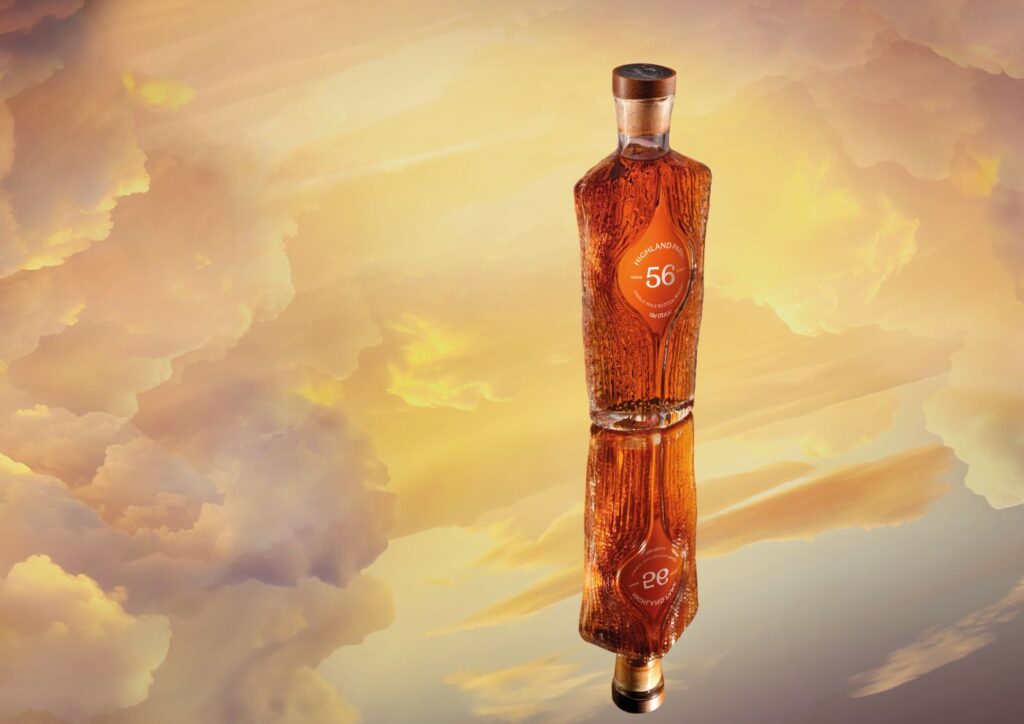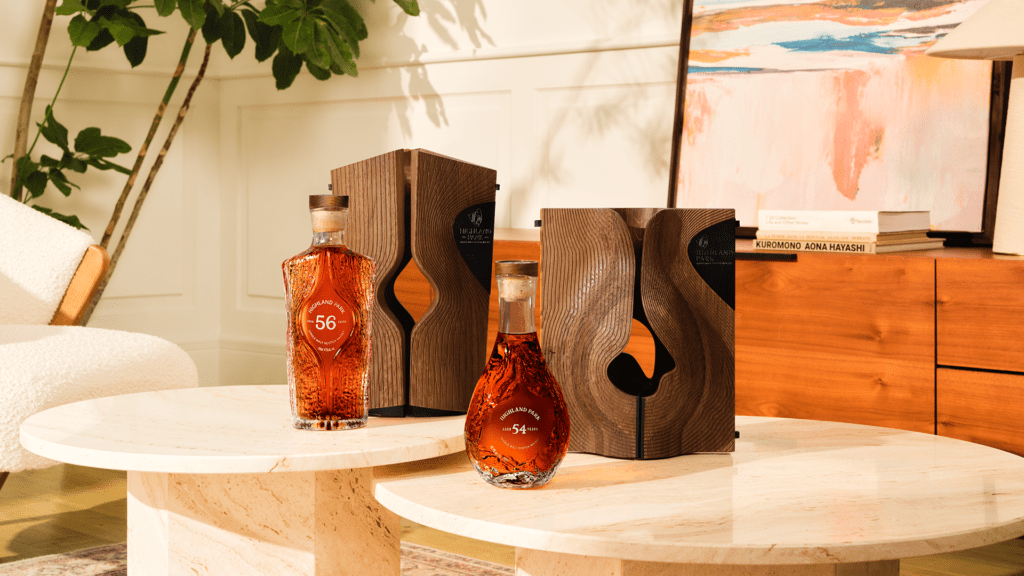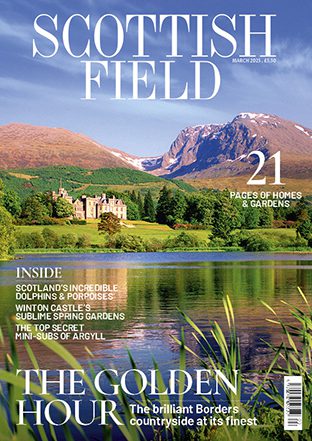
A dram with Gordon Motion, Highland Park: ‘Highland Park 56 started back in 1968, it’s our oldest and rarest whisky’
Since its beginnings as a ‘side-hustle’ of church beadle and whisky smuggler Magnus ‘Mansie’ Eunson, Highland Park has been an iconic part of the global whisky market for more than two centuries.
Now it’s releasing its oldest and rarest single malt – Highland Park 56. We caught up with the man behind the still, Gordon Motion, to learn more about the new dram.
Hello Gordon. Can you introduce yourself and tell us a little about your career?
I am Highland Park’s Master Whisky Maker. I studied a Post Grad Diploma in Malting, Brewing and Distilling at Heriot Watt University before working at various breweries and maltings in the UK. I finally landed the job of Assistant to the Master Blender with Edrington in 1998. In 2008, the company’s Master Blender retired, and I was successful in getting the job.
In the early days, I dealt with all our whiskies but more recently my focus is on Highland Park. I’ve now been working with Highland Park for nearly 27 years.
What inspired your career as a distiller? What brought you to Highland Park?
While studying Computer Science at university, my friend and I decided to visit several distilleries. I was instantly inspired, and it was then I decided this was where I wanted to work. I went back to university and soon after decided to apply for a post Grad Diploma in Malting, Brewing and Distilling.
I always thought I’d like to be a distillery manager, and if I’m honest it was a bit of luck that this opportunity arose at the right time. In more recent years, with the change in the whisky landscape and increasing interest in single malts, our team of whisky makers increased, and I took more of a focus on Highland Park.
Can you give a brief overview of Highland Park’s history?
Highland Park takes its name from the High Park above Kirkwall and was founded in 1798 by Magnus Eunson. Magnus was a butcher and a beadle at a local church, but it wasn’t necessarily just for his beliefs as he also found it a useful way to distribute his illicit alcohol. He reputedly used the church to hide the alcohol he had distilled in holes in the wall, behind the pulpit and even in coffins. The authorities finally caught Magnus in 1798, and he was then forced to licence the distillery. In 1816, Excise Officer John Robertson assumed control of the distillery. In 1895, James Grant purchased the distillery and expanded it to four stills three years later.
Highland Distillers purchased the distillery in 1937, and it’s remained in the company’s (now Edrington) ownership ever since.
What influence does Orkney have on Highland Park whiskies?
The use of Orkney heathered peat is by far the biggest influence on Highland Park’s flavour and it’s used to dry a proportion of our malted barley. Orkney has been windswept by Atlantic storms for millennia, so very few trees grow there. Consequently, the peat, which is laid down on Hobbister Moor, contains very little woody matter and is composed mainly of heather, sphagnum moss and low growing shrubs. When this peat is burnt to dry our malt, it delivers a fragrant, aromatic smoke, iodine smoke of Islay peat. Consequently, Highland Park has a very delicate smoky character.
The cool maturation is another aspect of Orkney which has influence on our whisky. Orkney experiences fewer extreme highs and lows in temperature and the average maturation temperature in our warehouses is lower than most of the rest of Scotland. This lower temperature means we lose less whisky to the angel’s share and results in a slightly slower maturation.
What fact may whisky lovers not know about Highland Park Distillery or Highland Park Whisky?
Although Highland Park is a peated whisky, the peating level is very low. The phenol level in our whisky is only around 1.5 to 2ppm. Highland Park is much lower than traditional peated whiskies from Islay, which can be around 20ppm.

What can you tell us about Highland Park’s rarest and oldest dram, Highland Park 56?
Highland Park 56 Year Old started back in 1968. We filled over 10,000 casks that year and in 2008 selected only ten of these. The whisky had been filled into refill casks and this allowed the whisky to develop age without becoming too woody, which would have been the case if these had been first-fill casks. I took these ten casks, blended them together and filled them back into the five first fill ex-sherry casks. Highland Park 56 Year Old comes from an untasted cask. The ex-Sherry puncheon it came from was made from American oak which has given it complexity yet maintains vibrancy for such an old whisky.
What is a typical day life in the life of a Highland Park distiller?
There isn’t a typical day! I’m based on our production site rather than at the distillery, therefore a lot of our work is around maintaining spirit quality throughout the production process. The day starts with approving the site’s water samples to allow production to progress. Thereafter, I could be looking at maturing samples to see how they’re progressing, approving casks to be tipped for a vatting, or assessing VAT samples at various stages through the production process. Other work includes comparing our stock holding with desired future sales, research projects and new product development. One of the best parts of my jobs is that every day can differ.
What is the most exciting part about your job and what is the most mundane?
I’m in a very privileged position in that I’m able to see and taste some fantastic whiskies. Part of my job requires reviewing stock as it’s maturing. It has always amazed me how two casks filled on the same day, with the same spirit, and stored in the same warehouse, can create completely different characters. That’s the joy of whisky making. It’s my job to take all the varying characters from all these different casks and try and create a consistently high quality whisky, every time. On the more mundane side, I’d say there is a lot of repetitive work, measuring colours and strengths of thousands of casks throughout the year.
Can you share the memory of your first dram?
My first experience of Scotch whisky was on New Year’s Eve, my brother recommended that if I was going to drink whisky I should stick to The Famous Grouse, ‘it was the best one’. Little did I know ten years later I would be looking after The Famous Grouse among our other whiskies.
What is your controversial/unpopular whisky opinion?
I’m often asked about whisky and food pairings, my favourite food pairing is Highland Park 12 Year Old and sweet chilli crisps – both in moderation!
What is your go-to dram and what is the dram you have as a treat?
My go to dram is Highland Park 12 Year Old. I have a bottle of Highland Park 40 Year Old which I would enjoy as a treat, and I’m also looking forward to opening some of my special releases such as single casks. After all, I made these whiskies to be savoured.
Can you share your favourite Highland Park Dram?
My favourite dram is probably Highland Park Dark Origins, although I don’t have a bottle of that now so I’m keeping an eye out for any that go to auction.
What international dram are you enjoying at the moment?
I’ve been a judge in the International Spirits Challenge for about 17 years and have seen thousands of international whiskies over that time. The quality of these new distilleries has improved dramatically over the years. I have several international whiskies in my drink’s cabinet, probably more bourbons as a category than any others, and I’m currently enjoying a Wyoming Whiskey Single Barrel.
Read more Whisky news here.
Subscribe to read the latest issue of Scottish Field.
TAGS


